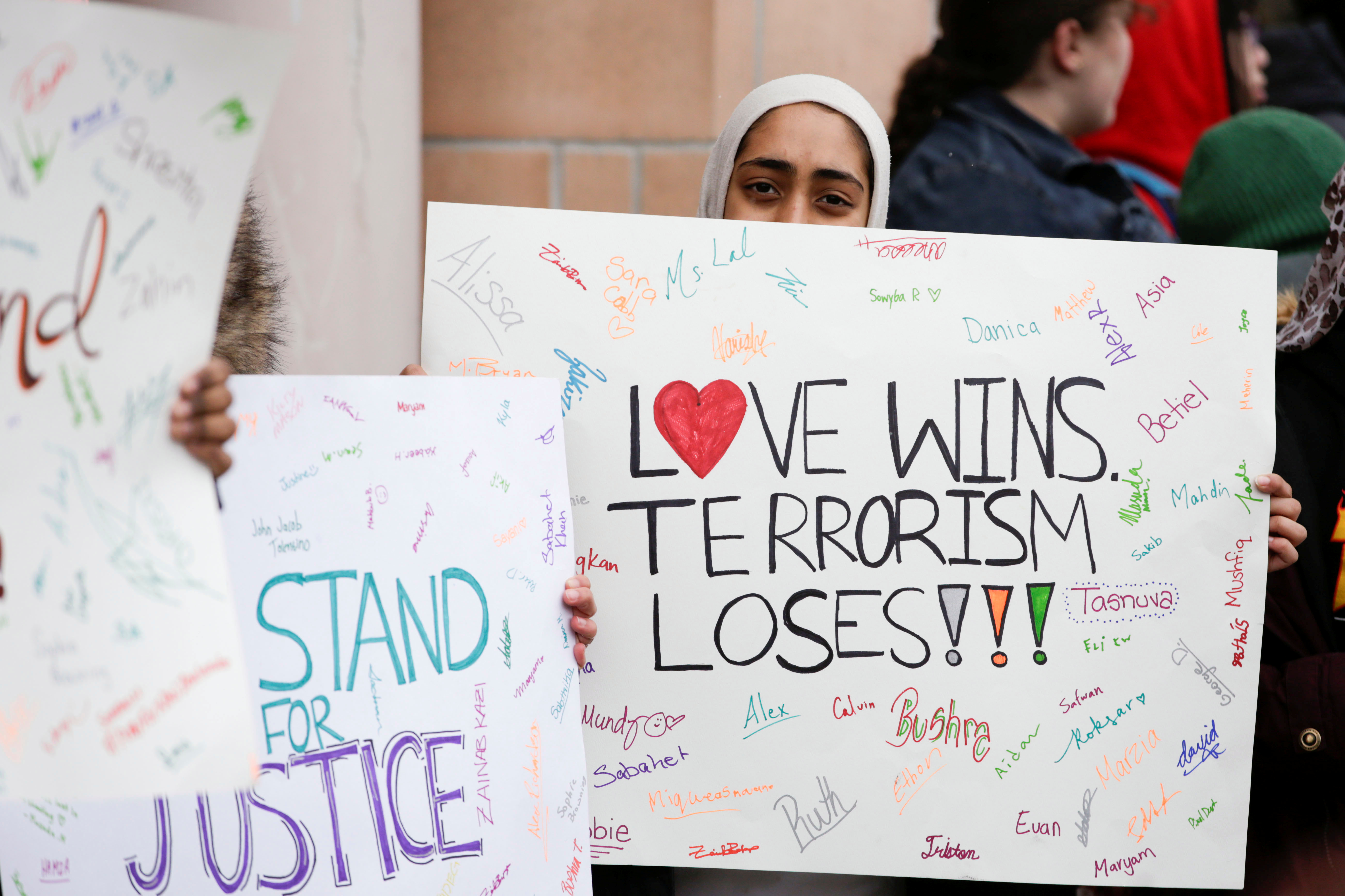
By Tom Lasseter and Tom Westbrook
CHRISTCHURCH (Reuters) – The bodies of victims from New Zealand’s mosques mass shooting were carried in open caskets on the shoulders of mourners into a large tent at Christchurch’s Memorial Park Cemetery on Wednesday – the first burials of the 50 victims.
The majority of victims from Friday’s attack in the South Island city were migrants or refugees from countries such as Pakistan, India, Malaysia, Indonesia, Turkey, Somalia, Afghanistan and Bangladesh.

People attend the burial ceremony for the victims of the mosque attacks at the Memorial Park Cemetery in Christchurch, New Zealand March 20, 2019. REUTERS/Jorge Silva
The youngest was a boy of three, born in New Zealand to Somali refugee parents.
The first two victims buried, father and son Khaled and Hamza Mustafa, came from war-torn Syria.
“I cannot tell you how gutting it is…a family came here for safety and they should have been safe here,” said Prime Minister Jacinda Ardern, visiting the city for the second time since the massacre.
Wrapped in white cloth, the bodies were laid to face Mecca, and, after jenazah (funeral) prayers, were carried towards their freshly dug graves.
“Seeing the body lowered down, it was a very emotional time for me,” said Gulshad Ali, who had traveled from Auckland to attend the first funeral.
Several mounds of dirt piled high marked the site of multiple graves which will be used for New Zealand’s worst mass shooting.
Hundreds gathered to mourn, some men wearing a taqiyah (skullcap), others in shalwar kameez (long tunic and trousers), while women wore hijabs and scarfs.
Heavily armed police stood watch with flowers tucked in their revolver holsters and attached to their high powered rifles.
Six victims were buried on Wednesday, with more expected during the week.
Ardern said this coming Friday’s call to prayers for Muslims in New Zealand will be broadcast nationally and there will be a two-minute silence on Friday.
“There is a desire to show support for the Muslim community as they return to mosques on Friday,” she said.
The bullet-ridden Al Noor mosque, where more than 40 people died, was being cleaned and repaired for Friday prayers.
Near the mosque, members of rival gangs did a Maori haka, a powerful indigenous ceremonial performance, and a crowd of people sung New Zealand’s national anthem as the sun set.
The Australian National Imams Council has called on Imams to dedicate this Friday’s Khutbah (sermon) to the Christchurch mosque mass shooting.
“This is a human and an international tragedy, not only a Muslim and NZ tragedy. These acts of terror are there to divide us…and we reject this in all its forms and ways, but rather we will stay united and strong.”
INTERNATIONAL INVESTIGATION
Australian Brenton Tarrant, 28, a suspected white supremacist who was living in Dunedin, on New Zealand’s South Island, has been charged with murder following the attack.
He was remanded without a plea and is due back in court on April 5, when police said he was likely to face more charges.
New Zealand’s police chief said global intelligence agencies, including the U.S. Federal Bureau of Investigation and those from Australia, Canada and Britain, were building up a profile of the alleged shooter.
“I can assure you this is an absolute international investigation,” Police Commissioner Mike Bush said at a media briefing in the capital Wellington.
Questions were being asked about New Zealand’s relaxed gun laws, which Ardern has promised to tighten, and on whether New Zealand authorities were focused enough on the risk from far-right extremists.
As of Tuesday night 21 victims had been identified, with the remainder expected to be completed on Wednesday before their bodies can be released for burial, police said.
Families of the victims have been frustrated by the delay as under Islam bodies are usually buried within 24 hours.
Bush said police had to prove the cause of death to the satisfaction of the coroner and the judge handling the case.
“You cannot convict for murder without that cause of death. So this is a very comprehensive process that must be completed to the highest standard,” he said.
Twenty nine people wounded in the attacks remained in hospital, eight still in intensive care.
Many have had to undergo multiple surgeries due to complicated gunshot wounds. The gunman used semi-automatic AR-15 rifles, with large magazines, and a shotgun.

New Zealand’s Prime Minister Jacinda Ardern meets with one of the first responders who was at the scene of the Christchurch mosque shooting, in Christchurch, New Zealand March 20, 2019. REUTERS/Edgar Su
TRAGEDY FOR A SCHOOL
The attack was broadcast live on Facebook and quickly distributed to other platforms, prompting Ardern and others to rebuke the technology companies.
A group of state-run New Zealand investment funds with a combined NZ$90 billion ($61.5 billion) in assets said they were putting their investment heft behind calls for Facebook, Google and Twitter to take action following the livestreaming and sharing on social media of the attack.
Ardern earlier visited Cashmere High School in Christchurch which lost two students in the attack – teenagers Sayyad Milne and Hamza Mustafa – plus Hamza’s father Khaled, and a former student Tariq Omar.
She talked to about 200 children gathered at the school auditorium about racism and changes in gun laws.
“Never mention the perpetrator’s name … never remember him for what he did,” she said, asking the children to focus on the victims.
($1 = 1.4624 New Zealand dollars)
(Additional reporting by Charlotte Greenfield and Edgar Sue in CHRISTCHURCH, Praveen Menon in WELLINGTON; Editing by Michael Perry, Lincoln Feast and Simon Cameron-Moore)






